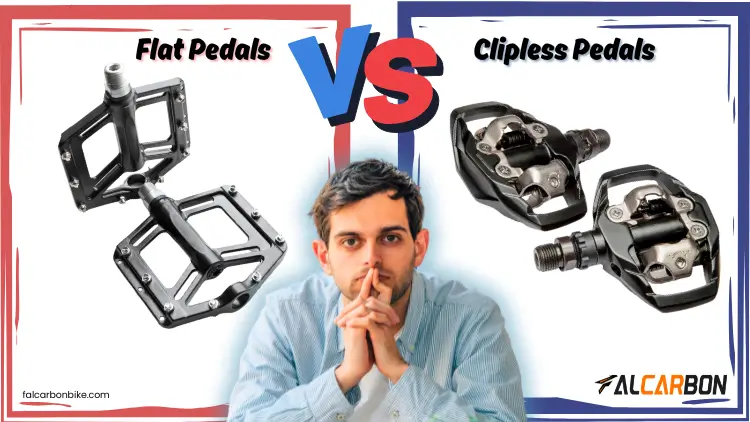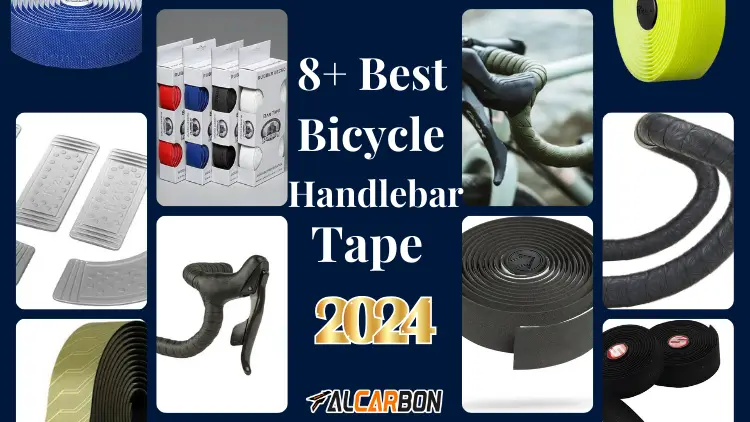Bike Stem: Types, choose & Install
The bike stem is a key link in bicycle accessories because it connects to the handlebar and front fork of the bike. It has a direct impact on your riding posture, handling performance, and comfort. Choosing the right Bike stem can not only enhance the riding experience but also ensure efficiency and safety. But, different factors such as the length, Angle. and the material of the Bike stem is different, so you need to choose the right Bike stem according to your own riding needs is an important step for each of us to consider.
In this article, I will take you to an in-depth understanding of Bike stem types, selection methods and drawings, and installation. and other related solutions, so that you can choose the right Bike stem for you in the fastest time. Now please dive with me!

What is a bike stem?
The Bike Stem is an important part used to connect the handlebars (carbon fiber handlebars) to the front fork rudder tube. The fitting originated in the late 19th century, and it was originally a simple steel part. Its role is mainly to determine the position of the rider, and better control the stability of the car plays a crucial role. A longer Bike Stem enhances stability and a shorter Bike Stem improves maneuverability.
How does Bike Stem work?
The Bike Stem works by firmly attaching the handlebars to the front fork rudder tube of the bike. allowing the rider to control the direction and stability of the bike. It is a key interface for steering and handling, and the length and Angle of the Bike Stem directly affect handling. Usually a longer (90-130mm) Bike Stem can reduce air resistance and improve trampling force. The length is shorter (usually about 35-60 mm) to improve maneuverability on technical terrain. allowing for more accurate steering, etc.
The main components of Bike Stem:

- Clamp – Secure the stem to the front fork rudder tube.
- Body – The main structure is located between the front fork and the handlebars.
- Panel – Hold the handlebars in place.
- Bolts – Used to secure the stem securely.
- Bike Stem top cover – This top cover is mounted on the rudder tube’s top. and helps pre-tighten the headphone bearings and keep everything aligned.
Bike stem types
Bike Stem You can be classified according to a variety of ways, and you can be classified according to the installation method. Angle changeability, according to the use of scene classification and other classification methods to show. Because each Bike Stem category will directly affect your bike’s performance, compatibility, and aesthetics.
The following I will describe to you according to these categories.
Classified by installation mode
- In-line Stem (Quill Stem):
- The Quill Stem (in-line Stem) is a traditional design typically found on older bikes and city bikes. It is fixed in place through the front fork tube and by locking screws for simple installation. In the structural comparison of in-line Stem, its design is gradually replaced by modern design. Usually fits a 1-inch or 1 1/8-inch rudder tube and provides height adjustability. The Stem advantage of this style is that you can fine-tune and rotate to achieve your riding position.
- Clamp Stem (Threadless Stem) :
- Clamp Bike Stem is our more fashionable choice nowadays. It is used for mountain bikes, road bikes, and Gravel bikes. It differs from the in-line type in that it does not need to be inserted through the front fork tube but requires a set of screws to be fixed to the outside of the front fork. This benefit is for better flexibility in adjusting the Angle of the handlebars. The clamp Stem performs well in weight and rigidity, making it more suitable for competitive and high-intensity riding. It is compatible with 1-1/8-inch and 1.5-inch rudder tubes, providing a more powerful and lighter solution. but requires the use of spacers to adjust the height.
Related Articles:
- 6+ Best Carbon Fiber Mountain Bike Handlebar
- The 8+ Best MTB Stem
- How to Measure Bike Stem for Better Control & Comfort
- How to Change Bike Stem (Step-by-Step Guide)
- How to choose the best Bike Stem Length
Classified by usage scenario.
- Road Bike Stem:
- Road bike Stems usually use shorter and lighter Stems, mainly to improve aerodynamic efficiency. Its length usually ranges from 70 to 110 mm, with a moderate rise of 6° to 12°. It is designed mainly for the pursuit of long distances, so it is generally stronger. and lighter material to ensure the least weight and greatest rigidity so that you can better control during the ride.
- Mountain Bike Stem:
- Mountain Bike Stem is usually shorter than road bike Stem, it usually has more flexibility. can quickly control the handlebar change and turn, suitable for difficult terrain. With a range of values from 35 to 60 mm and angles from 0° to +10°, it is designed with greater emphasis on stability and durability. as mountain bikes often face stronger vibrations and shocks.
- Gravel Bike Stem:
- Gravel Bike Stem is somewhere between a road bike and a mountain bike, usually between 70 and 110 mm in length. with a moderate rise of 6° to 12°, it is designed to be slightly longer for variable terrain. allowing riders to maintain better control over long distances.
Classification by Angle Changeability
- Fixed Angle Stem:
- This is one of the most common options, widely used in competition, road cars. and mountain bikes where this Stem is not adjustable and usually has a more stable performance suitable for professional riders who seek speed, lightweight, and rigidity.
- Adjustable Angle Stem:
- This adjustable Angle Stem adjusts the Angle of the handlebars according to the rider and provides greater comfort. which can be adjusted according to itself, reducing upper body stress and reducing the burden on the wrists and back. Provide more flexibility.
Related Articles:
- Cyclocross VS Gravel Bike
- Gravel VS Road Bike
- Gravel Bike VS Mountain Bike
- Road Bike VS Mountain Bike
- Triathlon Bike VS Road Bike
- Carbon Fiber vs Aluminum Bike
Bike Stem material comparison
The material of the Bike Stem directly affects its weight, strength, comfort, and cost. Common Bike Stem materials include:
- Aluminum: Generally there are two kinds of materials 6061 aluminum alloy and 7075 aluminum alloy. Both materials are durable and have good strength and rigidity for road and mountain biking.
- Carbon fiber: is a light material, with excellent rigidity and strength, for body weight reduction, and has a good shock absorption effect. But, the material is expensive and vulnerable to impact. Suitable for road racing car professional pursuit of performance riders.
- Titanium alloy: High strength, corrosion resistance, more expensive than carbon fiber. This material is suitable for long-distance and off-road riding.
- Steel: durable cheaper than aluminum alloy, heavier weight, impact resistance, generally used for retro and durable bikes.
- Magnesium Alloy: Titanium alloys have advantages over aluminum alloys. with lower weight and stronger corrosion resistance. However its strength is lower than aluminum alloy, and the price is higher.
Below, we provide a detailed comparison of aluminum, carbon fiber, titanium, and steel bike stems across seven key features, helping cyclists make an informed decision based on their riding needs and budget.
| Feature | Aluminum Stem | Carbon Fiber Stem | Titanium Stem | Steel Stem |
| Weight | Light (200-300g) | Very Light (150-200g) | Medium (250-350g) | Heavy (350-500g) |
| Strength | Moderate (290-310 MPa) | High (500-600 MPa) | Very High (800-900 MPa) | High (400-500 MPa) |
| Yield Strength | 200-250 MPa | 400-450 MPa | 600-650 MPa | 300-350 MPa |
| Impact Resistance | High (Resilient to impacts) | Moderate (Can be brittle under impact) | Very High (Absorbs impacts well) | High (Durable and resilient) |
| Tensile Strength | 300-350 MPa | 500-600 MPa | 900-950 MPa | 400-500 MPa |
| Cost | Affordable ($50-$150) | Expensive ($150-$350) | Very Expensive ($200-$400) | Low ($30-$80) |
| Vibration Damping | Moderate (Some damping) | Excellent (Dampens road buzz) | Good (Absorbs vibrations) | Low (Limited vibration damping) |
Related Articles:
Bike Stem key parameters analysis
Reach/Bike Stem Length
The length of the Bike Stem refers to the distance between the center of the vertical clamp and the center of the rudder clamp. which determines the distance between the handlebars. and the rider. Generally speaking, mountain bikes use a shorter Stem(50-60 mm or so). which mainly provides sensitive head control and plays an important role in rapidly changing and turning on complex terrain. Road bikes generally use a longer Bike Stem (around 100-140 mm) to achieve a more aerodynamic position and improve stability.
Related Articles: How to choose the best Bike Stem Length.
Angle/Bike Rise
The Bike Stem Angle refers to the Angle at which the Stem rises or falls relative to the rudder tube, which affects the height and tilt of the handlebars. which in turn affects the rider’s posture and comfort. It can be divided into negative angles and positive angles.
The negative Angle is usually -6° to -17°, and the negative Angle sets the vertical handlebar low to reduce air resistance and improve high-speed stability. This Angle is designed to help the rider lean forward and is mostly used for road bikes and racing bikes.
Positive Angle Stem (+6° to +35°): It provides a higher handlebar position. allowing the rider to maintain a more upright sitting position, and is commonly used for commuting, leisure, and mountain riding.
Clamp Diameter
Handlebar Clamp Diameter refers to the diameter of the fixed part of the handlebar of the Bike Stem. The common Handlebar Clamp Diameter is 31.8MM and 35MM. The clip size of 31.8mm is the most common one used at present. The 35MM is commonly used in competitive handlebar systems.
Front fork tube Size(Steerer Tube Diameter):
General front fork tube sizes range from 1-1/8 inch to 1.5 inches (40mm), which is generally the standard size. Some high-end models now use tapered (tapered) front fork tubes, usually 1-1/8 inches to 1.5 inches (40mm) in size. Conical front fork tubes of this size are more common in high-end mountain bikes and road vehicles, as they increase the rigidity and stability of the front fork.
How do you choose the right Bike Stem?
Choosing the right Bike Stem should be understood from the following aspects:
1. Bike Stem length.
The right Bike Stem length directly affects your riding posture and handlebar position. if you choose a longer Bike Stem, then the position of the handlebar will only extend forward, making the rider’s posture more aggressive. The shorter Bike Stem will allow you to maintain a comfortable upright position. Generally speaking, the right length is between 70-120mm, and you need to adjust and choose the right one according to your situation.
2. The Angle.
The Angle of the Bike Stem will affect your riding posture, the larger Angle (such as ±7° to ±17°) can allow you to maintain a more upright riding posture. reduce the pressure on the back, suitable for long riding. The smaller Angle gives you better handling and is the best choice for speed riders.
3. Bike Stem materials.
When choosing a Bike Stem first you need to consider its rigidity and the choice of materials. Generally speaking, aluminum alloy and carbon fiber are commonly used. Compared to carbon fiber, aluminum Stem is more durable but heavier. The Carbon Bike Stem is favored by competitive riders for its lightweight and good shock absorption performance.
4. Bike Stem diameter.
What you need to know is that different Bike Stem diameter sizes match different handlebars. Common handlebar diameters are 31.8mm and 25.4mm, if your handlebar is 25.4mm and you choose a 31.8mm stem, you need to check if there is an adapter for it.
5. Bike Stem installation method.
Different Bike Stems have different installation methods, the general front-mounted Stem can push the handlebars to the front. and the rear-mounted STEM can pull the handlebars back.
6. Type of ride.
You need to choose the right Stem for your riding style.
- Road riding needs to choose a light, rigid Stem, which can maintain stability.
- Mountain biking requires a shorter and firmer Stem because it is better for quick turns and better handling on rough roads.
- Recreational cycling is about choosing to keep yourself in a more comfortable upright position for longer periods.
Related Articles: How to choose the best Bike Stem Length.
Bike Stem Install and Adjustment
Installing and adjusting a bike stem is an essential task that impacts your comfort and control while riding. Here are the steps to install and adjust your bike stem properly:
1. Remove the Old Stem and Clean the Interface
- Remove the Old Stem: Start by using the appropriate tool (usually a wrench) to remove the existing stem. Loosen the screws that secure the stem to the handlebars and the steerer tube of the fork. Carefully remove the old stem to avoid damaging the handlebars or fork tube.
- Clean the Interface: Before installing the new stem, clean the fork tube and handlebar clamp area. Use a clean cloth and some cleaner to wipe off any dirt, grime, or old grease. Cleaning the interfaces ensures a better fit and reduces friction when installing the new stem.
2. Install the New Stem and Tighten the Screws Evenly

- Choose the Right Stem: Make sure the new stem’s length, angle, and clamp size are compatible with your bike. Align the new stem with the fork tube and handlebar, ensuring a proper fit.
- Install the Stem: Slide the stem onto the fork tube, ensuring a snug fit with no gaps between the stem and the fork tube. Initially tighten the screws lightly, allowing for adjustments in angle and alignment later.
- Tighten Screws Evenly: Do not tighten one screw fully at first. Instead, tighten all the screws gradually and evenly to ensure the stem is securely attached to the fork tube and handlebars.
3. Adjust the Handlebar Angle and Align the Front Wheel
- Adjust Handlebar Angle: Based on your riding style and comfort preferences, adjust the stem’s angle. Typically, the handlebars should be aligned with the front wheel and positioned at a slightly raised or neutral angle. especially for casual and commuting rides, to reduce pressure on your back and wrists.
- Align the Front Wheel: Make sure the front wheel is in line with the handlebars. This ensures that when you turn the handlebars, the wheel reacts correctly. Proper alignment is crucial for smooth and responsive handling.
4. Tighten Screws Gradually to Ensure Stability
- Tighten Gradually: Start by tightening the screws at the center of the handlebar clamp and fork tube. Do not tighten them all at once. Tighten each screw alternately to ensure the stem is securely attached with even pressure.
- Ensure Stability: After tightening all the screws, check the stem for any wobbling or looseness. Gently wiggle the handlebars to make sure they are firmly in place. If there is any movement, go back and tighten the screws until the stem is secure.
Related Articles: How to Change Bike Stem and How to Measure Bike Stem.
FAQ
Conclusion
The right selection and installation of Bike stem is the foundation to help you improve your riding efficiency. Through the above content, I believe you have learned about the different types of stems. and how to choose the right Bike stem according to your style. Whether it is racing, mountain,n or recreational cycling, the right bike stem can bring you a better riding experience. Remember to follow the correct steps and torque requirements during installation to ensure safety and stability. Hopefully, this article has provided you with useful guidance for selecting and installing a bike stem so that you can enjoy each ride with more confidence.





![How to Wrap Handlebar Tape [2025 Guide] 11 How to Wrap Handlebar Tape [2025 Guide]](https://falcarbonbike.com/wp-content/uploads/2024/12/how-to-wrap-handlebar-tape.webp)




